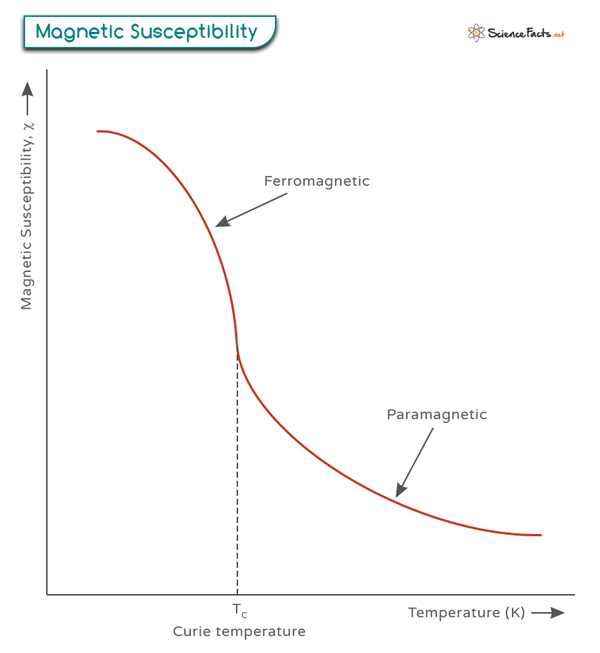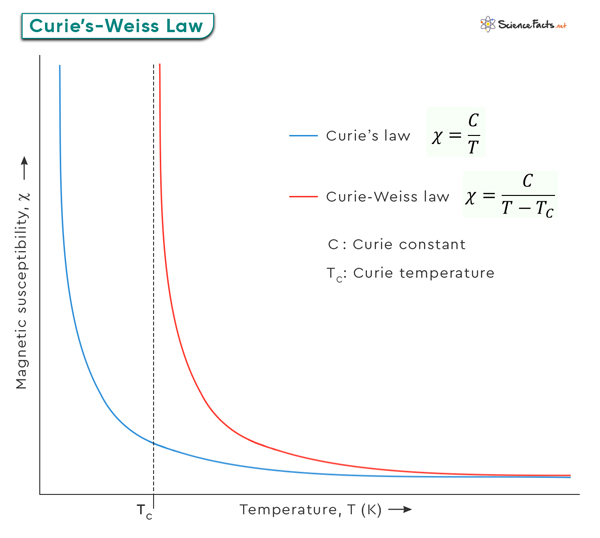Curie temperature derives its name from French physicist Pierre Curie, who demonstrated that magnetism ceased to exist at a specific critical temperature in the late 19th century.
Significance
Curie-Weiss Law
Curie Temperature Values
The magnetism of a material is solely evident when the magnetic moments align themselves in a specific configuration. Induced magnetism occurs when an assortment of disorganized magnetic moments are coerced into alignment by an applied magnetic field. As magnetic materials approach the Curie temperature, the alignment of their magnetic moments is forcibly disrupted. Consequently, as the operating temperature rises, nearing the material’s Curie temperature, the magnetic strength of the material diminishes due to the moments moving out of alignment. In general, magnets exhibit reduced strength when exposed to elevated temperatures. Mathematically, the Curie-Weiss law is typically expressed as: Where: χ is the magnetic susceptibility of the material. C is the Curie constant, a material-specific constant with the unit Aˑm-1ˑKˑT-1. T is the absolute temperature (in Kelvin). TC is the Curie temperature. This law simplifies the complex behavior of actual paramagnetic materials. However, it provides a valuable approximation for understanding how their magnetic susceptibility changes with temperature. When T approaches TC, the magnetic susceptibility increases, indicating that the material becomes more responsive to an external magnetic field. When T is greater than TC, the material behaves as a paramagnet and becomes weakly magnetic. Data Courtesy: Analyzing-testing.netzsch.com

